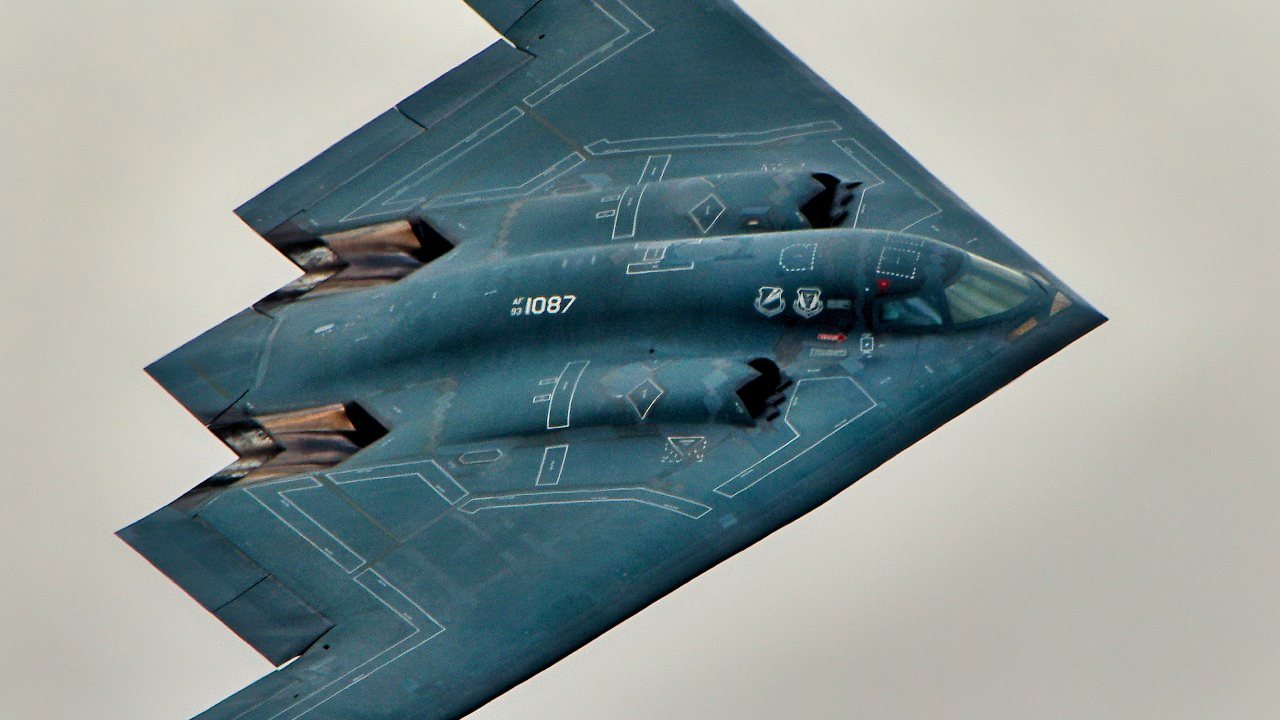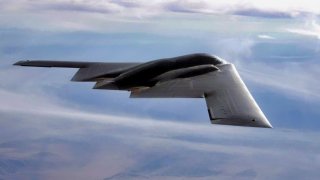B-2 Spirit Stealth Bomber: The Most Expensive Plane Ever ($2.13 Billion Each)
The "B-2" in B-2 Spirit is not shorthand for "Budget Buster," but the original stealth bomber is indeed the most expensive airplane ever built. Just how expensive? $2.13 Billon per plane.
The "B-2" in B-2 Spirit is not shorthand for "Budget Buster," but the original stealth bomber is indeed the most expensive airplane ever built.
Just how expensive?
As noted in The Economic Times of India, "The reported initial cost per unit was $737 million in 1997 dollars. But costs went up by the time it was inducted in the United States Air Force. The total program cost averaged $2.13 billion per aircraft." That actually makes the F-35 Lightning II look cheap by comparison.
Naturally, this begs the question: Is the B-2 Spirit worth the hefty price tag? Does it provide enough bang for the buck? Let's take a deeper dive into the history of this pricey plane.
B-2 Beginnings
Unlike the original so-called stealth fighter (a misnomer in this case), the F-117 Nighthawk – and unlike the F-22 Raptor and the F-35 (true stealth fighters) – the original stealth bomber was not made by Skunk Works, the renowned aircraft design program headed up by the legendary Clarence "Kelly" Johnson.
Instead, the B-2 is a Northrop Grumman product.
The warbird went into production in 1987. After being shrouded in not-very-effective secrecy, the stealth bomber was revealed to the public with plenty of pomp & circumstance at its final assembly facility in Palmdale, California, in November 1988.
The Spirit made her maiden flight on July 17, 1989, but did not attain initial operating capability until April 1997. In the time between the public rollout and attainment of operational status, costs spiraled, provoking howls of derision in the media and the halls of Congress. Plenty of doubts were expressed about whether the thing would actually work. After the collapse of the Soviet Union in 1991, the voices of doubters grew louder and louder.
After all, the B-2 was a product of the Cold War, originally designed to penetrate Soviet air defenses and carry conventional and nuclear weapons. Congress slashed the budget for the plane, cutting the original procurement plan from 132 airframes all the way down to 21.
To this day, no Spirit has ever flown inside Russian airspace. But the warbird did eventually prove her worth in combat, and she finally shut her critics up.
Stealth Spirit Specifications
As with the F-117, the B-2 is a subsonic aircraft, with a max airspeed of 630 miles per hour and a cruise speed of 560mph. Its wingspan is 172 feet, with a length of 69 feet and a height of 17 feet.
The warbird has a maximum takeoff weight of 336,500 pounds, and perhaps most significantly, a payload of 40,000 pounds'-worth of ordnance carried in her two internal bomb bays. The Spirit totes that bomb load over a maximum unrefueled range of approximately 6,000 nautical miles.
B-2s Into Battle
In 1999 – 10 years after her maiden flight and eight years after the Soviet collapse – the Spirit would finally be blooded in combat, and against a former communist country no less: Serbia, formerly the Socialist Federal Republic of Yugoslavia.

As noted by a Northrop Grumman fact sheet:
"The B-2 saw its first operational use during Operation Allied Force. Two B-2s flew more than 31 hours from Whiteman Air Force Base in Missouri to Kosovo. They attacked multiple targets, then flew directly back. The B-2s flew less than 1 percent of the total missions, yet destroyed 33 percent of the targets during the first eight weeks of conflict." (Emphasis added.)
The stealth bomber would further demonstrate her worthiness of U.S. taxpayer dollars during the Global War On Terror. It made history in the process. Quoth the Northrop Grumman fact sheet again:
"The B-2 holds the record for longest air combat mission in history. In 2001, the Spirit of America and five other B-2s were the first to enter Afghan airspace for a record-setting 44-hour mission.
The aircraft’s performance is even more impressive in that the B-2 made a quick pit stop for a 45-minute crew and service change with engines still running. It then flew back to Missouri for another 30-hour flight for a total of more than 70 consecutive hours."
The Spirit would continue to deliver top-notch performances during Operation Iraqi Freedom, as well as twice in Libya, in support of Operation Odyssey Dawn and Operation Odyssey Lightning.
The Present and Future of the B-2
Fast-forward to the present day, and the media skepticism and derision is gone.
In fact, in a recent CNN Style report, correspondent Jacopo Prisco was downright complimentary, noting that, "One of the most sophisticated flying machines in existence, the B-2 can reach a target anywhere in the world and return to base, refueling in mid-air. No B-2 has ever been lost in combat." (Emphasis added.)
The aforementioned Whiteman AFB, Missouri, is the only operational base for the B-2. Plans for her replacement, the B-21 Raider, are already underway. From there, its operational status date is anybody's guess. So in the meantime, the Spirit will have a secure seat at the table of America's aerial arsenal.
About the Author
Christian D. Orr is a former Air Force officer, Federal law enforcement officer, and private military contractor (with assignments worked in Iraq, the United Arab Emirates, Kosovo, Japan, Germany, and the Pentagon). Chris holds a B.A. in International Relations from the University of Southern California (USC) and an M.A. in Intelligence Studies (concentration in Terrorism Studies) from American Military University (AMU). He has also been published in The Daily Torch and The Journal of Intelligence and Cyber Security. Last but not least, he is a Companion of the Order of the Naval Order of the United States (NOUS).


